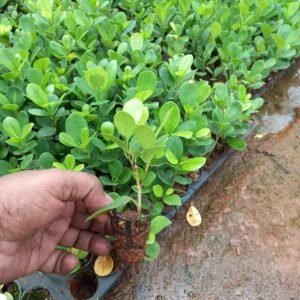The Spider Plant (Chlorophytum comosum) is a popular and easy-to-care-for houseplant known for its attractive appearance and air-purifying qualities. Native to South Africa, the Spider Plant has become a beloved staple in homes and offices around the world due to its adaptability, low maintenance needs, and charming foliage.
Appearance
The Spider Plant is distinguished by its long, arching leaves that are typically green with white or yellow stripes running lengthwise. The leaves are narrow, and they grow in a rosette pattern from a central base, creating a lush, fountain-like appearance. The plant’s leaves can reach lengths of up to 12 inches, adding to its dramatic effect.
One of the most notable features of the Spider Plant is its ability to produce “babies” or offsets. These are small plantlets that grow on long, thin stems that extend from the main plant. The plantlets resemble miniature versions of the parent plant and can develop roots if they come into contact with the soil. This reproductive trait makes the Spider Plant an excellent choice for propagation and sharing with friends and family.
Care and Maintenance
Spider Plants are known for their resilience and ease of care, making them ideal for both novice and experienced gardeners. They thrive in a variety of indoor conditions, including low to bright indirect light. While they prefer moderate light, they can tolerate lower light levels, although their growth may slow down.
The plant prefers well-draining soil and should be watered regularly, allowing the top inch of soil to dry out between waterings. Overwatering can lead to root rot, so it’s important to ensure that the pot has good drainage. Spider Plants are quite forgiving of occasional neglect, but they will thrive with consistent care.
In terms of temperature, Spider Plants do best in a range of 65-75°F (18-24°C). They can tolerate cooler temperatures down to about 50°F (10°C), but sudden drafts or extreme cold can be detrimental. The plant also benefits from occasional feeding with a balanced, liquid fertilizer during the growing season (spring and summer) to encourage healthy growth and vibrant foliage.
Pruning is generally minimal. Removing any dead or damaged leaves and cutting back the plantlets if they become too long helps maintain the plant’s appearance and health. If the plant becomes too large or unwieldy, it can be repotted into a larger container to provide additional space for growth.
Benefits
Spider Plants are not only decorative but also beneficial for indoor air quality. They are known to help purify the air by removing toxins such as formaldehyde and xylene. This makes them a great addition to homes, offices, or any indoor environment where air quality can be a concern.
The plant is also valued for its low maintenance requirements and ability to adapt to a range of indoor conditions. Its attractive appearance and air-purifying properties make it a popular choice for adding greenery and improving the ambiance of living spaces.
Symbolism
The Spider Plant is often associated with good luck and prosperity, partly due to its easy growth and prolific propagation. Its ability to thrive under various conditions symbolizes resilience and adaptability. The plant’s natural ability to produce new plantlets also represents growth and renewal.






Reviews
There are no reviews yet.